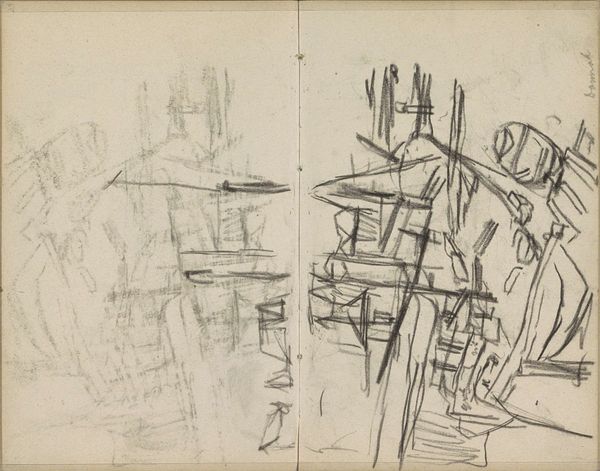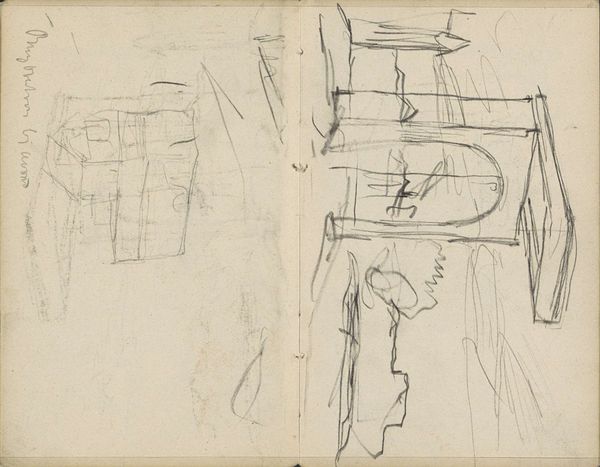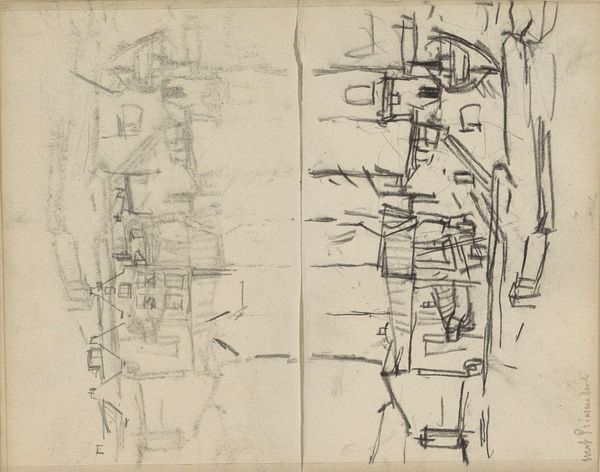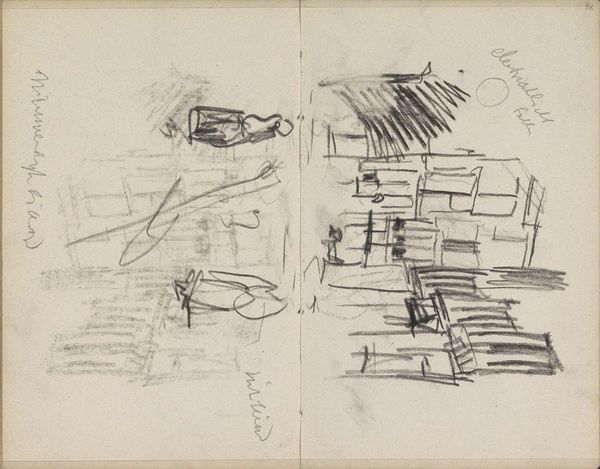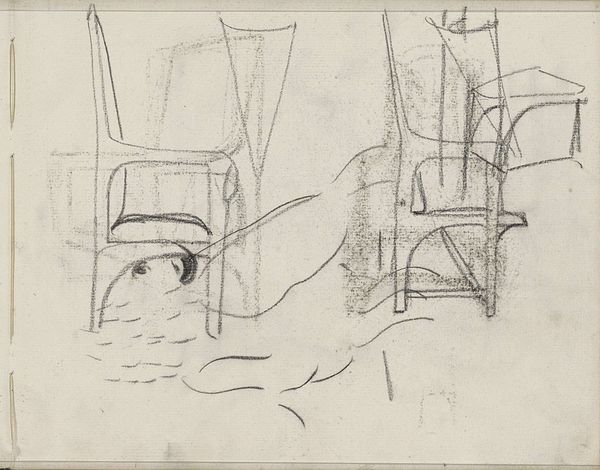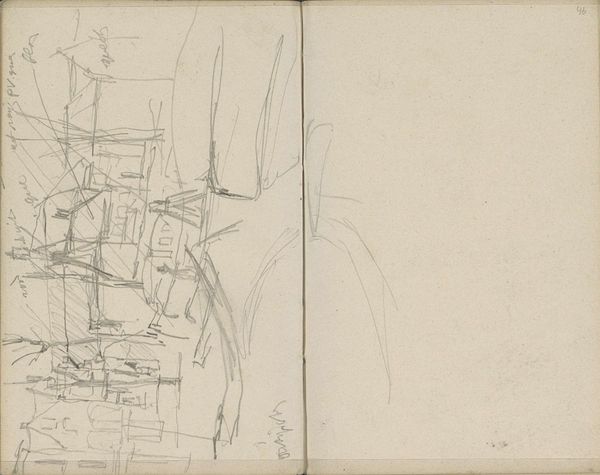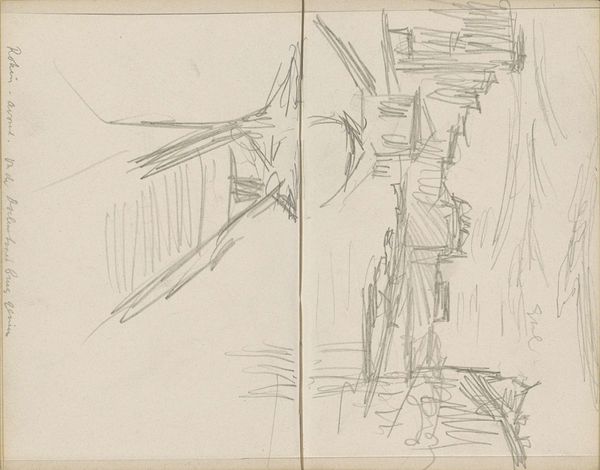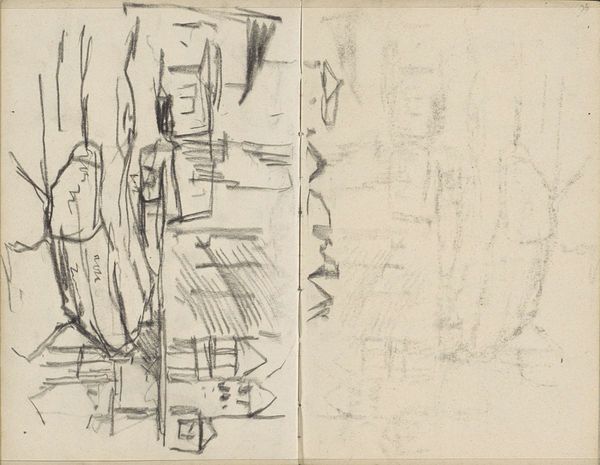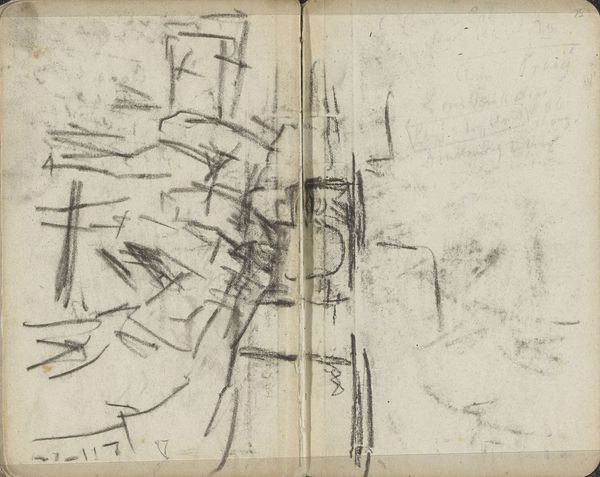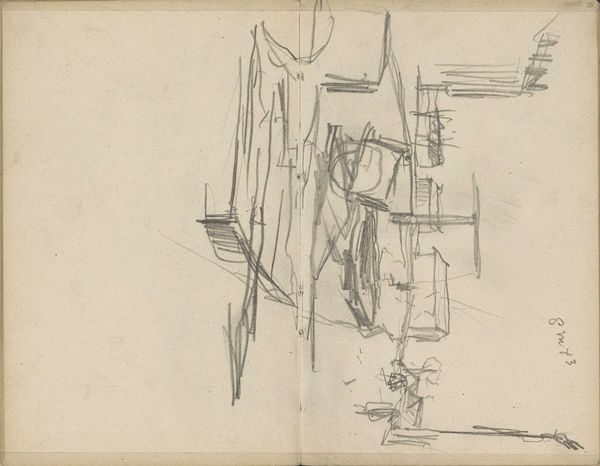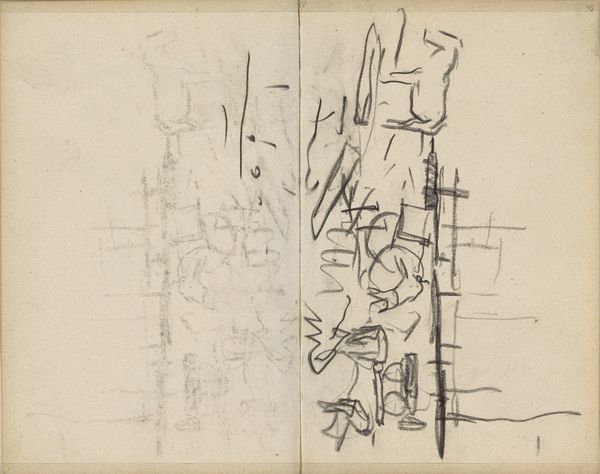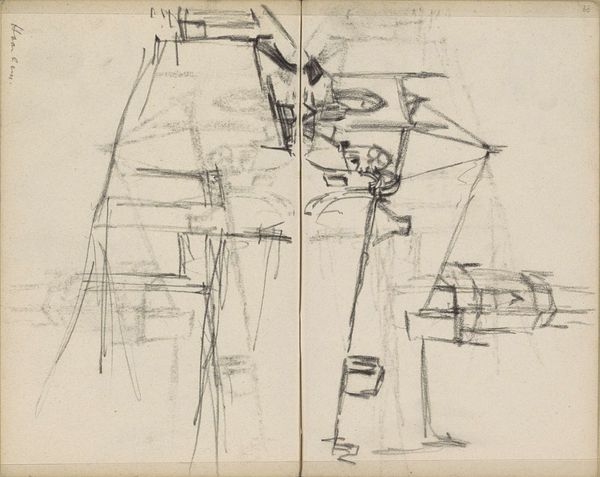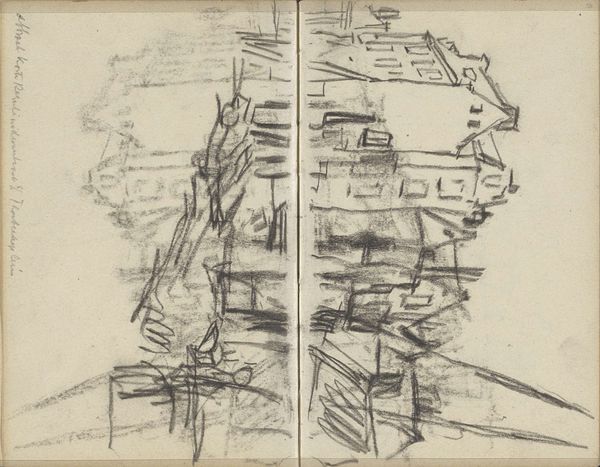
Copyright: Rijks Museum: Open Domain
Curator: This is George Hendrik Breitner's "Gezicht op een brug in Amsterdam," likely sketched between 1886 and 1903, part of the Rijksmuseum collection. It’s rendered in pencil on paper. Editor: A whisper of a city! So faint, so…unsure. Like a memory trying to surface, or maybe a dream fading as you wake. The bridge is barely there, just suggested. Curator: Precisely. The rapid, light pencil work exemplifies the principles of Impressionism. Notice the suggestive lines; the lack of precise detail places emphasis on the overall impression, the essence of the scene, rather than a literal representation. Editor: He’s captured something in transit. Fleeting. I imagine him standing there, perhaps shivering in the Dutch wind, frantically trying to pin down this moment before it vanishes. Curator: One might read this sketchbook drawing through the lens of structuralism, discerning the underlying grammar of Breitner’s artistic language. The recurring vertical and horizontal lines—evident even in the sketchy incompleteness—speak to the inherent order he found within the urban chaos. Editor: Order in chaos! I like that. But also, look at the empty space—especially on the right page. It makes the tangible bits seem even more fragile, doesn’t it? Like the whole city might just… dissolve. Curator: That juxtaposition could be interpreted as a visual manifestation of existential themes prevalent in the late 19th century. The individual grappling with modernity. Editor: Maybe he just ran out of time! You know, the trams were coming, and he had to run for it! It’s honest, somehow. Not all polished and perfect. Curator: In its raw state, it invites interpretation, emphasizing process over product. Its incompleteness IS its statement. Editor: Makes you want to finish the sketch yourself, doesn't it? Add your own story, your own bridge… Curator: Indeed. It serves as an index, not only to a specific location but also to the artist’s methodology. It allows one to theorize his mental processes, deconstruct his technique, and extrapolate meaning from its constituent parts. Editor: I like to think he would've smiled at that, George. All those big words about his little doodle. It's good to remember that great art sometimes starts with the simple act of seeing, really seeing, the everyday.
Comments
No comments
Be the first to comment and join the conversation on the ultimate creative platform.
